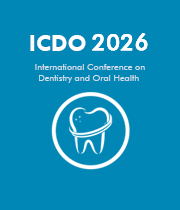Title: A case of gardner’s syndrome involving a multidisciplinary approach
Abstract:
Background: Gardner’s syndrome; a rare autosomal dominant disorder, is a subset of familial adenomatous polyposis (FAP) associated with both intestinal and extra-intestinal manifestations, including dental anomalies. Mutations in the APC tumour suppressor gene underlie the condition, which has a prevalence of 1 in 8,000 to 14,000, with a slight female predilection. Patients develop numerous intestinal polyps with high malignancy risks, often preceded by oral and craniofacial symptoms such as maxillofacial osteomas, odontomes, unerupted teeth and delayed dental development.
Patient Information: A 16-year-old female with FAP and well-controlled asthma presented at the Lister Hospital Oral and Maxillofacial Department for evaluation of her malocclusion.
Management & Outcome: The patient was seen on a joint oral surgery- orthodontic clinic and a multidisciplinary approach was taken. Radiographic imaging, including OPG and CT scans of the maxilla and mandible revealed several odontomes and impacted teeth which required surgical intervention. Planned surgical management involved extractions of the UR5, UL5, unerupted LR8 and LL8 teeth, impacted and unerupted LR2, ULC, LLC, D, E, LRB, C. Multiple odontomes were surgically removed in all quadrants along with placement of advanced platelet rich fibrin (APRF) under general anaesthesia. The procedure involved raising various mucoperiosteal flaps aswell as extraction of a LR2 in close proximity to the lower border of the mandible, located bucco-lingual & horizontally displaced with a lingual root containing an apical hook. Post-surgical review indicated satisfactory healing and planned orthodontic treatment to align the dentition.
Key Learning Points:
- Early identification of craniofacial anomalies is critical in the management of Gardner’s syndrome
- The importance of an early referral to gastroenterology for patients with suspected Gardner’s syndrome due to the high risk of malignancy associated with FAP
- The use of oral techniques such as APRF to improve patient recovery and outcomes




